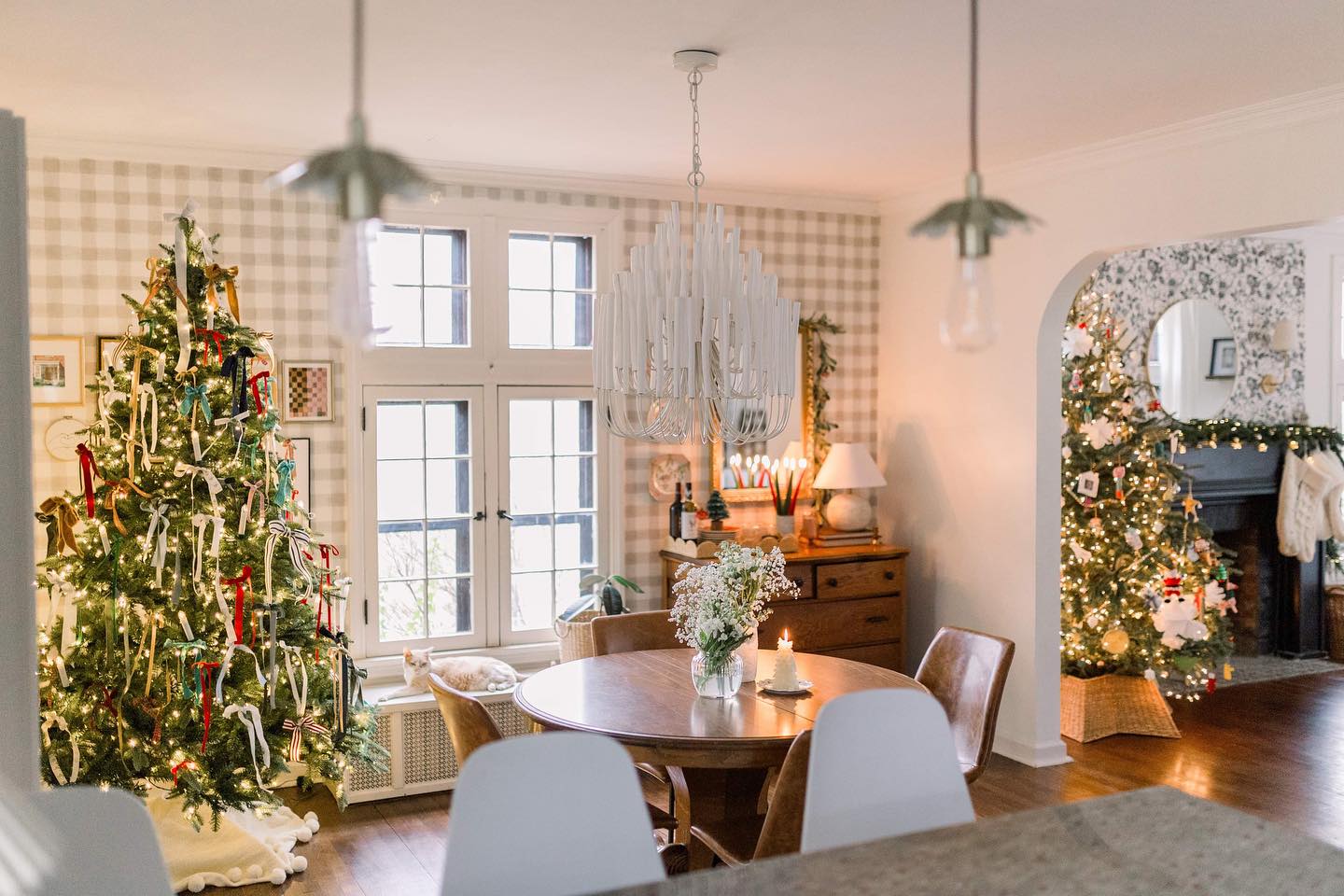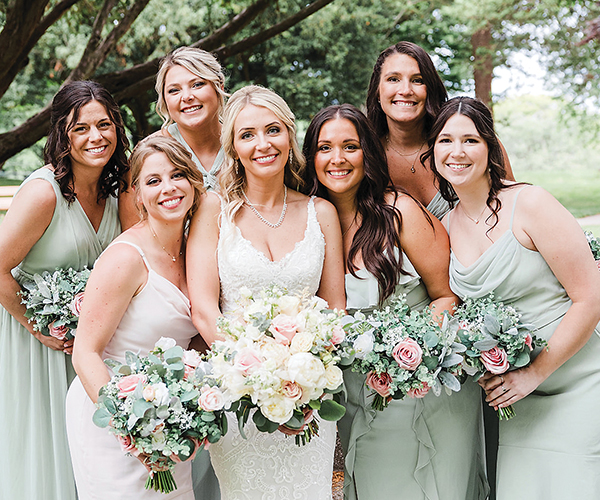Inside the Enclaves
by Colleen Smitek | Jun. 20, 2007 | 4:00 AM
It’s mid-day, but she’s opened a bottle of red wine. She’s working backward in her collection, she tells me, and the year on this particular vintage is 1995. “Is it all right?” she asks.
Maybe it’s the wine, but I say something no guest — reporter or not — should ever say.
If you were new money, you’d have much nicer furniture in here.
She is completely nonplussed. Still leaning back in her chair, sipping her wine, she sets me straight: “Who am I trying to impress?” she asks, laughing.
She has a point. She lives surrounded by corporate leaders and socialites, every house worth at least a half million. There would be no end if everybody tried to out-couch one another. And those aren’t the values of old money, anyway. Old money will spend millions on their house and then not redo the kitchen — ever. Old money doesn’t have to impress you with their furniture, because everybody knows who they are. In a way, trying not to impress people actually makes them more impressive.
That’s why my subject doesn’t want her name used. Because of what her old money neighbors might think of her.
Nowhere, in fact, were people more suspicious, more reluctant to talk than in Northeast Ohio’s three bastions of old money — Gates Mills, Daisy Hill and Waite Hill. In one case, it took a week and a half dozen calls to get the phone number of a resident I was told was friendly and wanted to chat. When I got her on the line, she asked me to call back in an hour. She never answered the phone again. And never returned my messages.
So maybe name dropping is gauche in these exclusive neighborhoods — but that doesn’t mean we can’t do it.
Indians Hall of Famer Bob Feller lives in Gates Mills in a 3,900-square-foot Cape Cod. (How many guys who have thrown a no-hitter, three actually, live in your neck of the woods?) And silent-film actress May Allison, one of Hollywood’s first true stars, is buried in the Gates Mills South Cemetery. (She had lived for years in another enclave — Bratenahl.) The “regular” folks include CEOs, investment bankers and lots of old money families.
It’s rude to talk about money, too. But we’re like that. The median household income in Gates Mills ($133,605) is almost three times that of Parma ($47,843). The most expensive home currently for sale in Parma is going for $419,000. In Gates Mills, it’s $4.95 million. Both are fourbedroom colonials.
There’s got to be more to these enclaves than money and whom you know, though, right?
As the prettiest of all the enclaves, Gates Mills is particularly intriguing. An old stagecoach inn at the center of the village became the Chagrin Valley Hunt Club.
Western Reserve-style homes with picket fences back up to the Chagrin River. It’s so idyllic, so charming, so perfect that it almost feels unreal.
My first stop is Sara’s Place, the new (and only) restaurant in town. One thing that all of these places have in common (except for Chagrin Falls) is a lack of commercial districts. A big-box retailer would be unthinkably horrid. A chain restaurant would be terrible. Some even questioned Sara’s Place. Restaurants and stores draw people. Some of those people — like me — will be outsiders; outsiders up to no good (the spotlight is never good, I am told at every turn).
My first mistake was calling the restaurant Sara’s Place — more than once. Each time, I was corrected. It’s pronounced Saaahra’s Place.
A lot of care went into making this restaurant Gates Mills worthy. The floors are made of 100-year-old reclaimed barn wood. The exterior is covered with the ubiquitous white clapboard. (Take a look around your ’burb and see if you can find a single new commercial building covered in wood, not vinyl.)
Although the restaurant is casual, on this day at least, no one is wearing jeans. Louis Vuitton, designer sunglasses and a fine-gauge cardigan will do nicely for a brunch featuring a smoked-salmon plate and a smoked-salmon pizza, as well as comfort food such as stuffed cabbage and chicken potpie. What sells best, though, is the California Benedict, with its avocado and artichokes.
I’m the only person wearing flip-flops, but nobody shoots me any looks. The place actually feels pretty comfortable. I’m starting to think that, as one real estate agent told me, “old money isn’t what it used to be.” Younger generations don’t feel the same need to “belong.” Thus, there is not the same sense that others are excluded. What’s more, technology is generating money today — a business landscape where breaking the rules is more important than following them. Entrepreneurs in Northeast Ohio don’t need the Hunt Club to get ahead.
I run this theory by a resident, but she assures me that old money — at least in some circles — is going strong. And it’s still tough to become a part of it “Sometimes you can. Sometimes you can’t,” she says. “It all depends.” She is terrified that her name will appear in print, so I agree to identify her only by her ties to Gates Mills. Still, she can’t say exactly what it is that enables some people to happily mingle over drinks at the Hunt Club, while others remain outsiders. She can only say what not to do. “The showier you are, the less chance you have,” she says. “Cars, houses, jewelry — they are all ways of letting people know what you have.”
I cross the Chagrin River on a footbridge. A path leads along the side of the white-steepled Episcopalian church, where the carillon bells (one of only 200 sets in North America) ring after services on Sunday. Across the street is the legendary Hunt Club, which was launched in 1908 with the purchase of several hounds in England whose bloodlines are still carried on today.
I continue on down Old Mill Road, every house is achingly charming with its white clapboard and “Gates Mills green” shutters. “You’re just in time to help me weed my yard,” a man calls out from underneath his sun hat. I get the sense that he wonders what I’m doing here and has struck up this conversation as bait.
I should probably stay to chat. After all, that’s what I’m here for. But I feel like I’ve been pegged for what I am — an outsider.
“I haven’t weeded my own garden yet,” I shout back, never breaking stride.
Councilwoman Mary Reynolds raves about the village’s community spirit and lack of pretension, comparing the village to Fairview Park, where she grew up. “I felt the same level of community in both,” she says. “There’s more open space in Gates Mills, but I don’t feel the people are any different.”
The misperception that people can be snobby in these parts, she says, comes from the fact that many people have never been to Gates Mills or Hunting Valley. With almost no stores or restaurants in either place, there’s really no reason to go. So the mystique — and misperceptions — linger.
Local real estate agent Georgia Murray of Howard Hanna Smythe Cramer and I are wearing the same dress (a knit from Ann Taylor Loft). Is this a good sign? Am I one of them? She tells me about the Halloween parties, Fourth of July parades and all kinds of festivals. Everybody brings a dish to the annual art show — a good oldfashioned potluck.
What kind of dish?
“Oh, maybe cold-poached salmon with dill.”
Dress or no dress, this is final proof of the divide. Poached salmon is not typical potluck. I mention this to Reynolds, as evidence that this place is not as pedestrian as everybody seems intent on proving. She quickly counters that there is an annual chili cook-off. “I can’t imagine anything more grassroots,” she says.
Finally, I find a nonnative to speak with. A mother of two whose children attend private schools and take riding lessons at the Hunt Club, she spends a fair amount of time here, but lives in a town down the road.
“It’s one thing to be a guest, and it’s another thing to live there,” she says. “They’re friendly to guests and welcoming to guests, but they know whether you’re one of them.” How do they know? If your children don’t wear Lilly Pulitzer or Lacoste, “it’s an obvious yet subtle indicator of income,” she says. The appropriate look for women is a mix of sporty and preppy, with $500 Burberry jackets being especially common.
The trick — whether with cars, homes or clothes — is to make classic choices that indicate good taste, without being showy. Even more important is education.
“There’s a lot of subtle questions about where your children go to school and what they do during the summer,” she says.
She doesn’t mean any of this in a bitter way, I can tell. It’s just the way it is.
T he West Side, of course, has a reputation for being much more open. And then, there’s the cluster of 117 homes in the northwest corner of Lakewood known as Clifton Park. The residents pay a yearly fee (no one would say how much, but they all described it as modest) and have joint access to Clifton Beach. There are almost nightly gatherings there, I am told.
But when I try to check one out, I am once again met with resistance.
A homeowner I’d previously spoken with could easily offer to vouch for me to get past the guard station. Instead, she e-mails: “You can explain to the guard what you are doing and … I’m sure he will let you in. You’re on your own from there.”
Nobody, it seems, wants to be the person who let a reporter into her enclave.
Nonetheless, I do head down to the beach on a balmy Friday night and, after a few questions, the guard let me in. The sandy beach, 50 or so feet deep, stretches about the length of two football fields. A boardwalk runs parallel to the water, lined by a row of trees. Dozens of picnic tables sit side by side in the shade.
Nearly every table is covered by a bright plaid or striped tablecloth and has a wicker picnic basket on it. Most people brought meat to grill, but some order pizza. Everybody has wine and fresh fruit.
While the adults, quite a few holding babies, chat by the tables, the small children dart back and forth across the beach, hauling buckets of water to their sand castles and splashing in the waves.
The area used to be a bit more staid, one man says, but the recent influx of young families has livened things up. Many of the people at the beach today used to live elsewhere in Lakewood but moved, in some cases, just a few blocks, because they were drawn to the Clifton Park lifestyle. From Memorial Day on, every weekend is spent at the beach.
“This is what it’s all about,” one woman tells me, as her son comes up to the picnic table, thirsty from running around. “Do you feel like there are a lot of social rules?” I ask.
She doesn’t start talking about how welcoming everybody is or how down-toearth her neighbors are. Instead, she gestures to her T-shirt, khaki shorts and bare feet and laughs. “Uh, noooo.”
To me, this is the enclaves at their best. You’re close to downtown, all the homes are old and beautiful, there are packs of small children. It’s so social, so fun.
I think back to the woman whose couch I critiqued. She couldn’t have loved her community any more. “When I moved here,” she told me, “my soul felt suddenly free and nurtured.”
Yes, all of her neighbors are well off, but money won’t get you in their crowd. What will get you in, she continued, is the same as it is in any community: “They have to be impressed by you as a person.”
I feel like I could head down to Clifton Beach with my two little kids and a bottle of wine and have a great night. I have more trouble imagining any kind of social success over drinks at the Hunt Club.
That’s just me, though. As my “couch” friend said: “It all depends on who you are as a person.”
Trending
-
1
-
2
-
3
-
4
-
5










